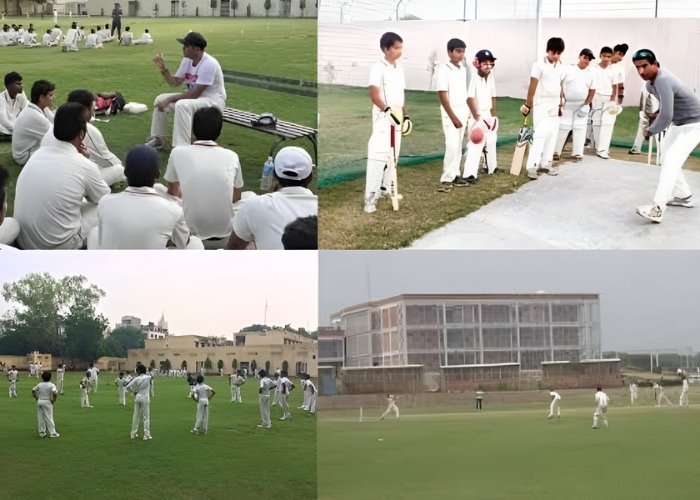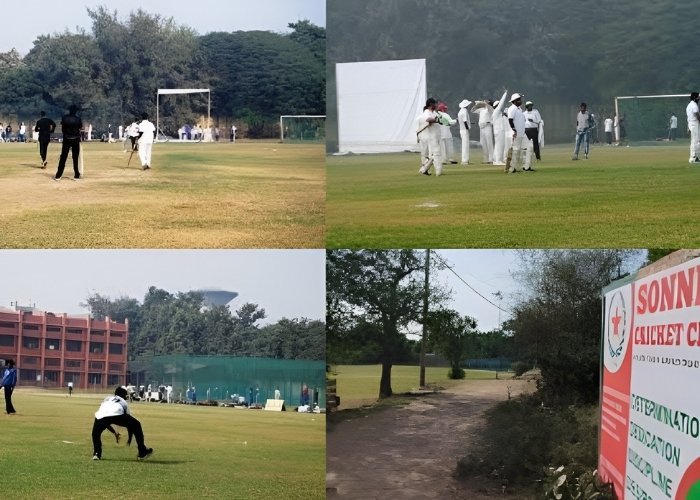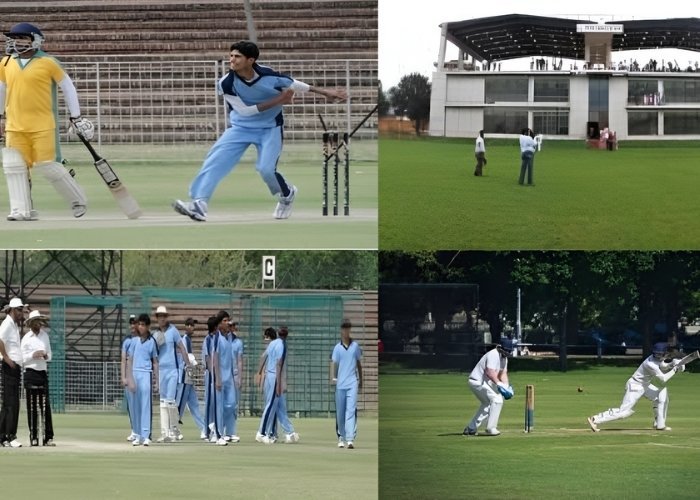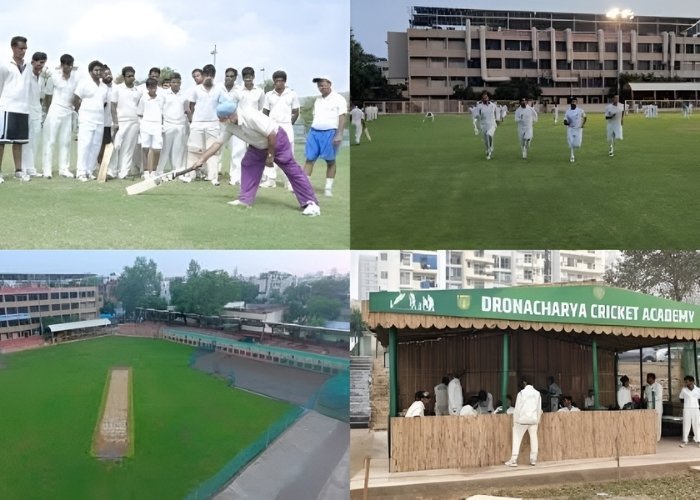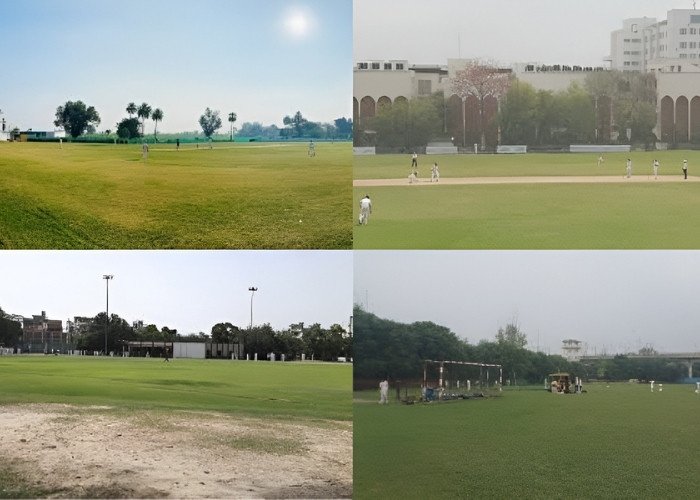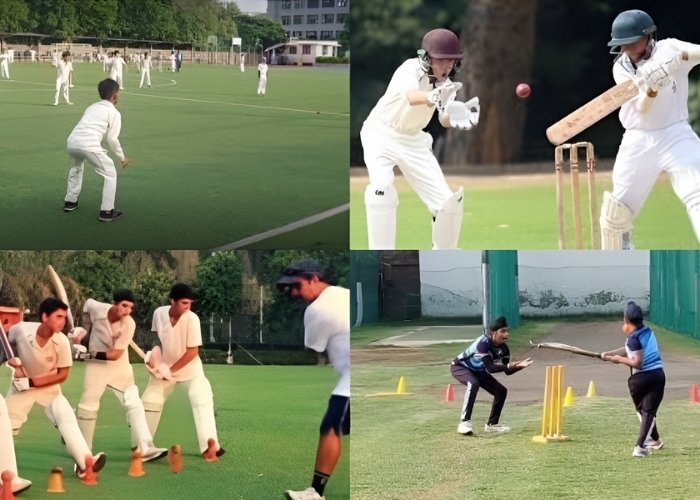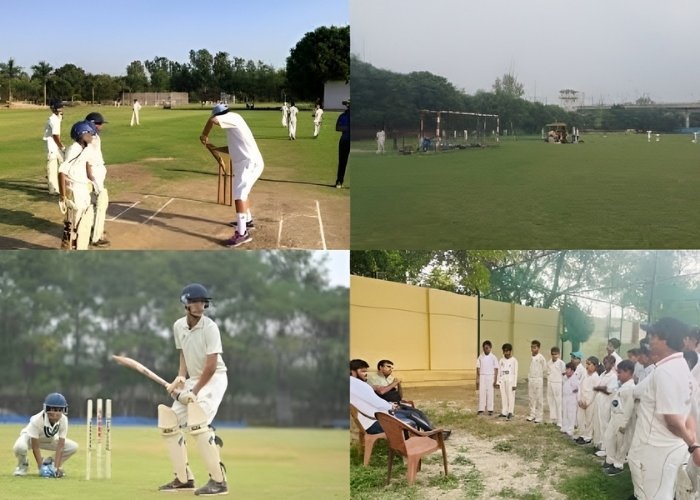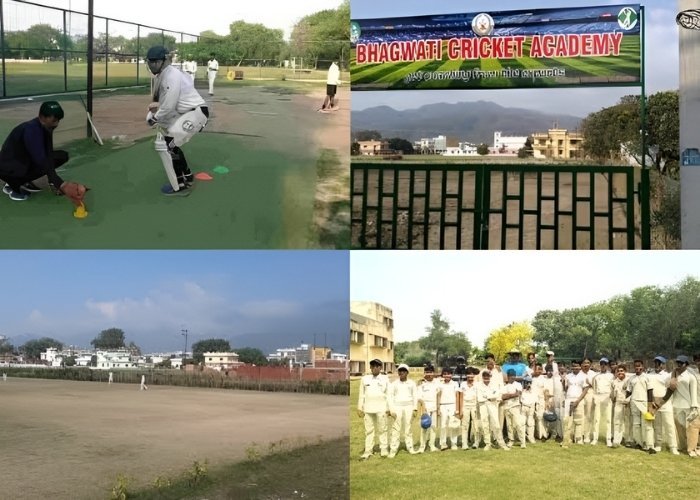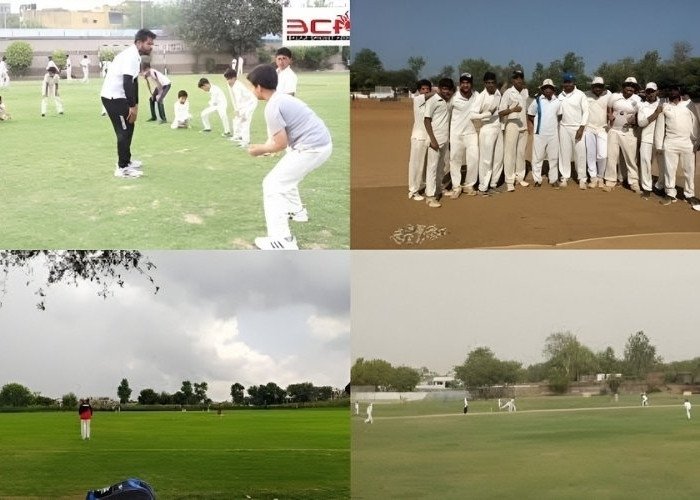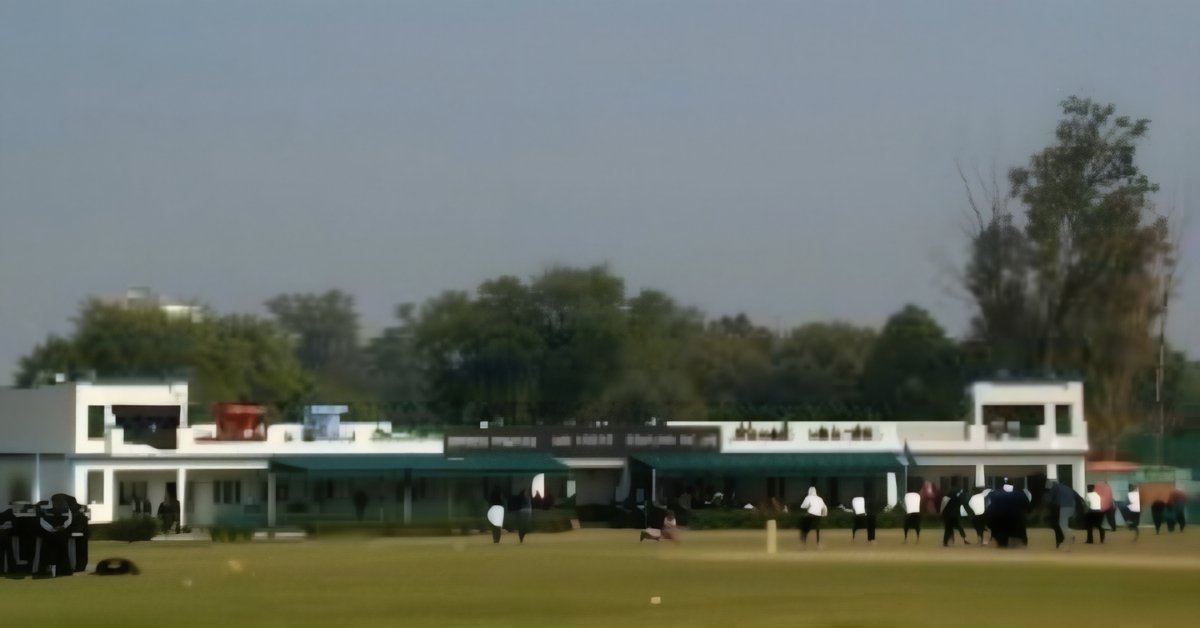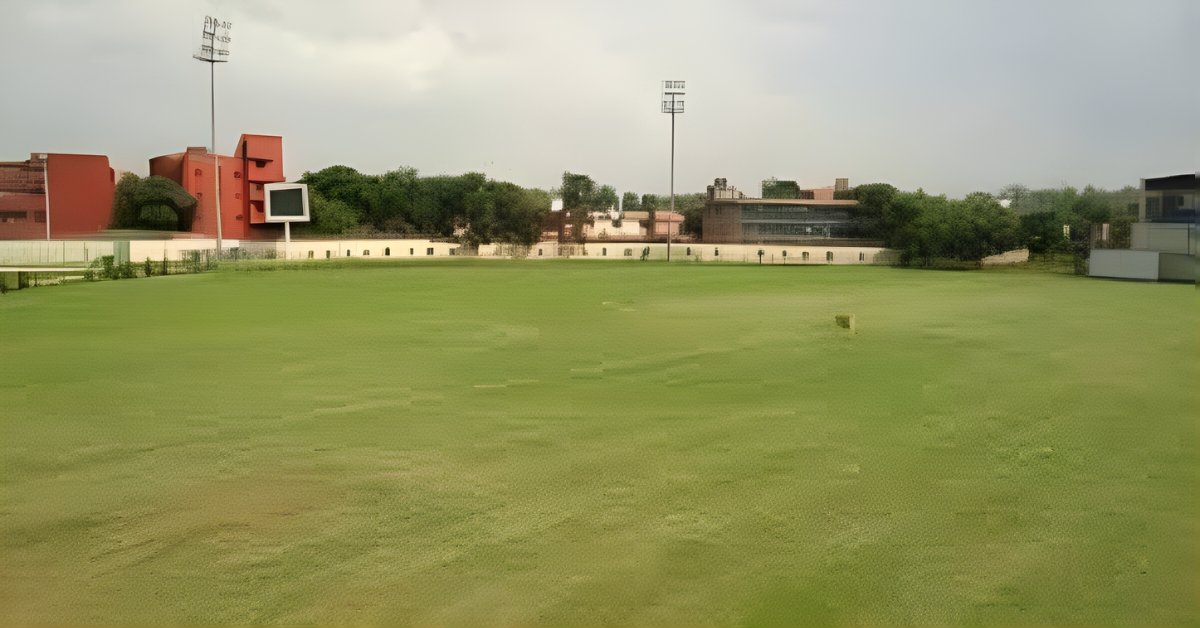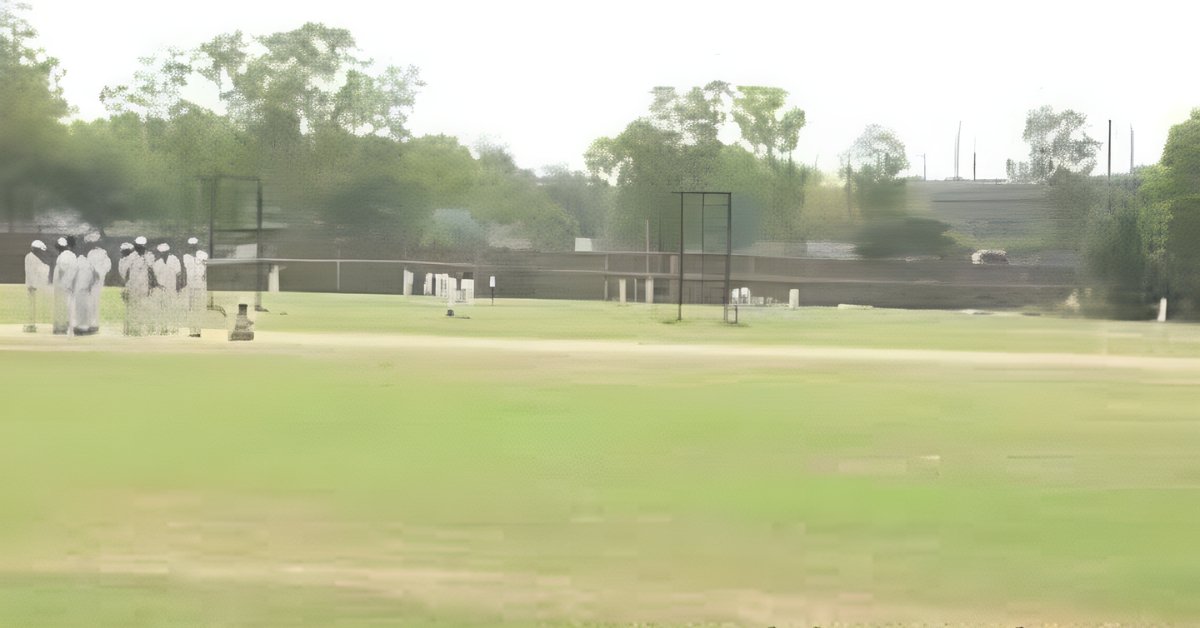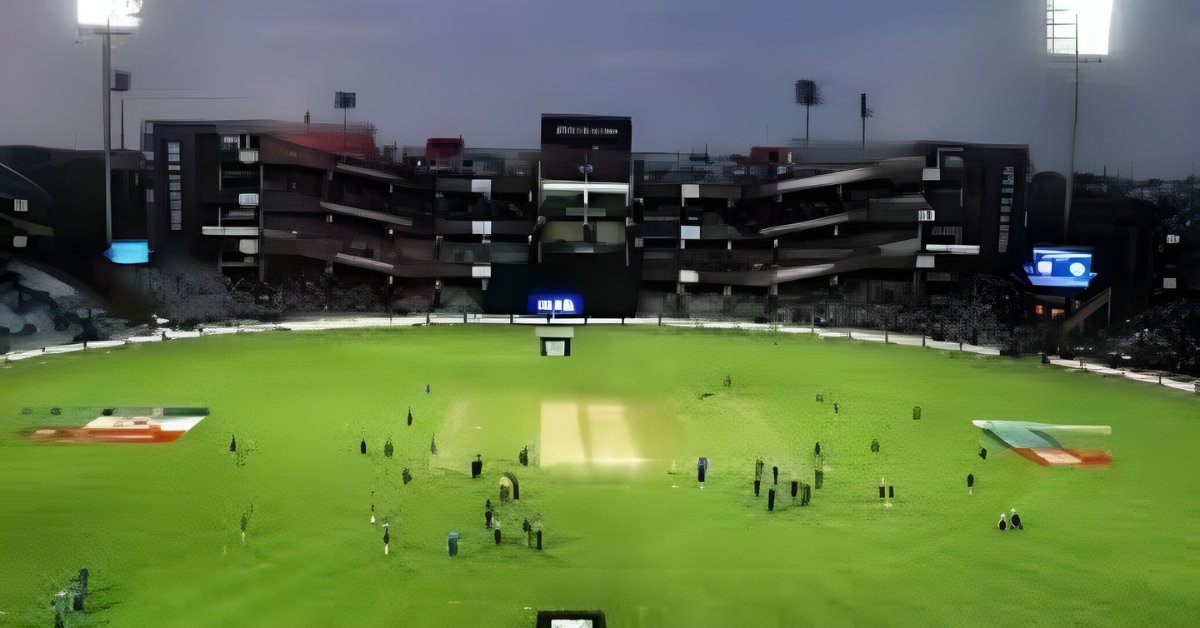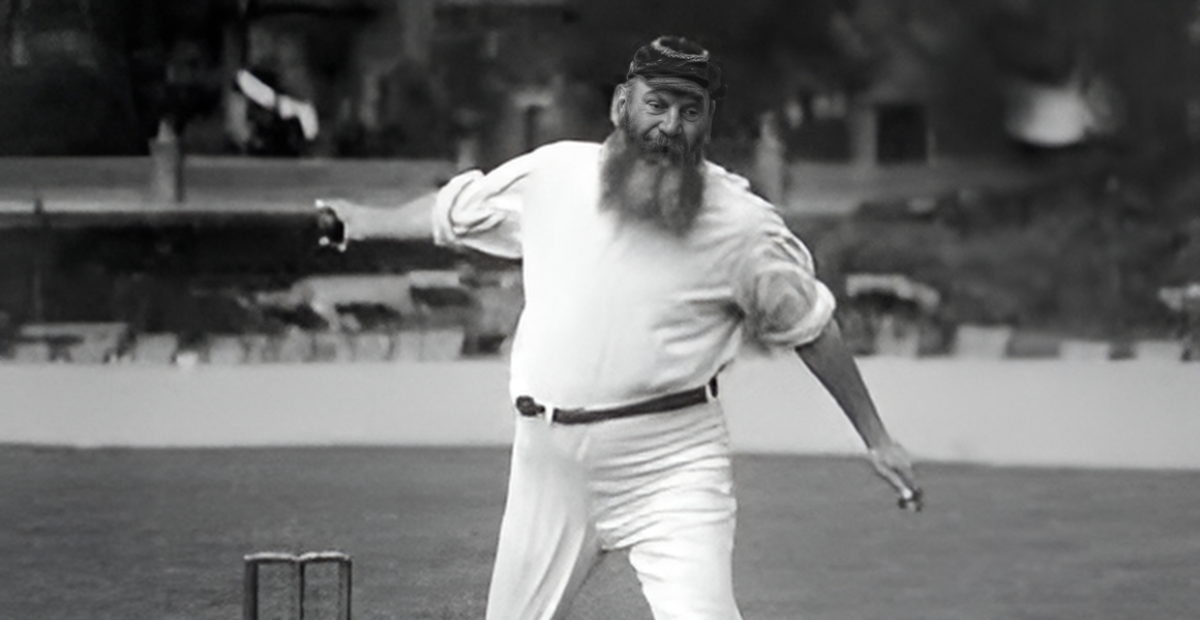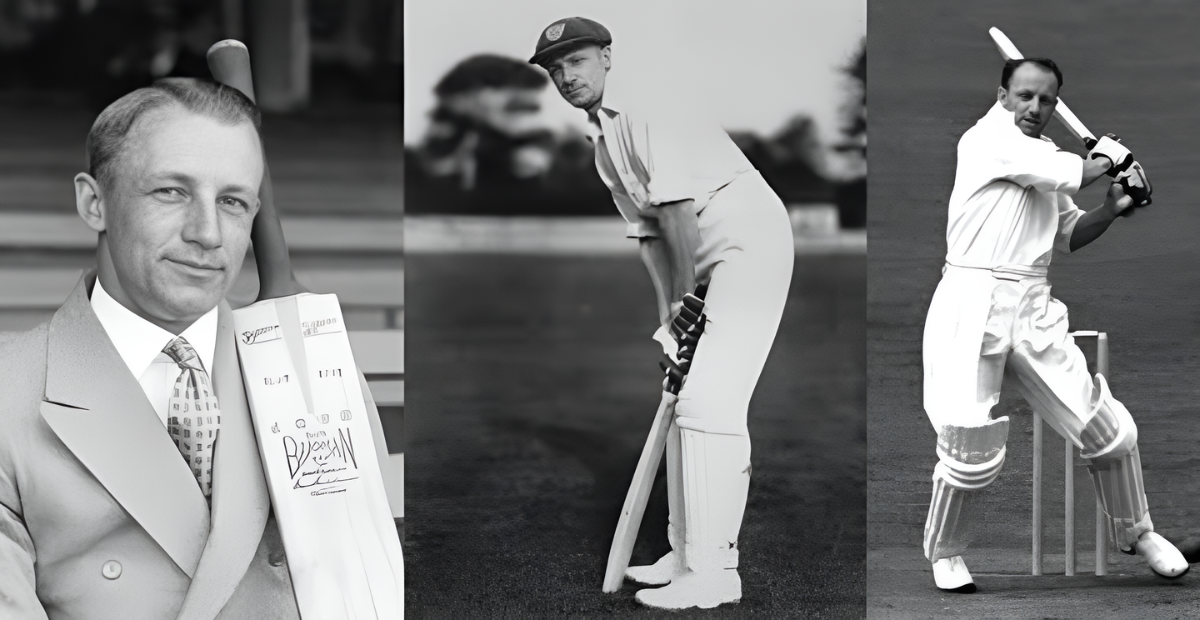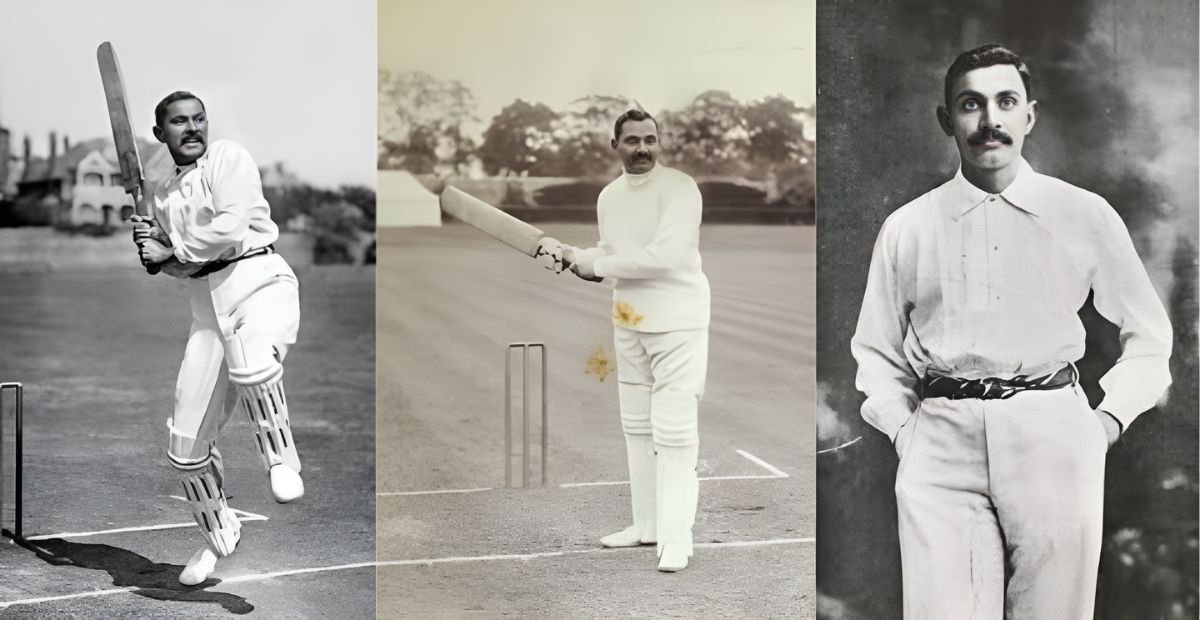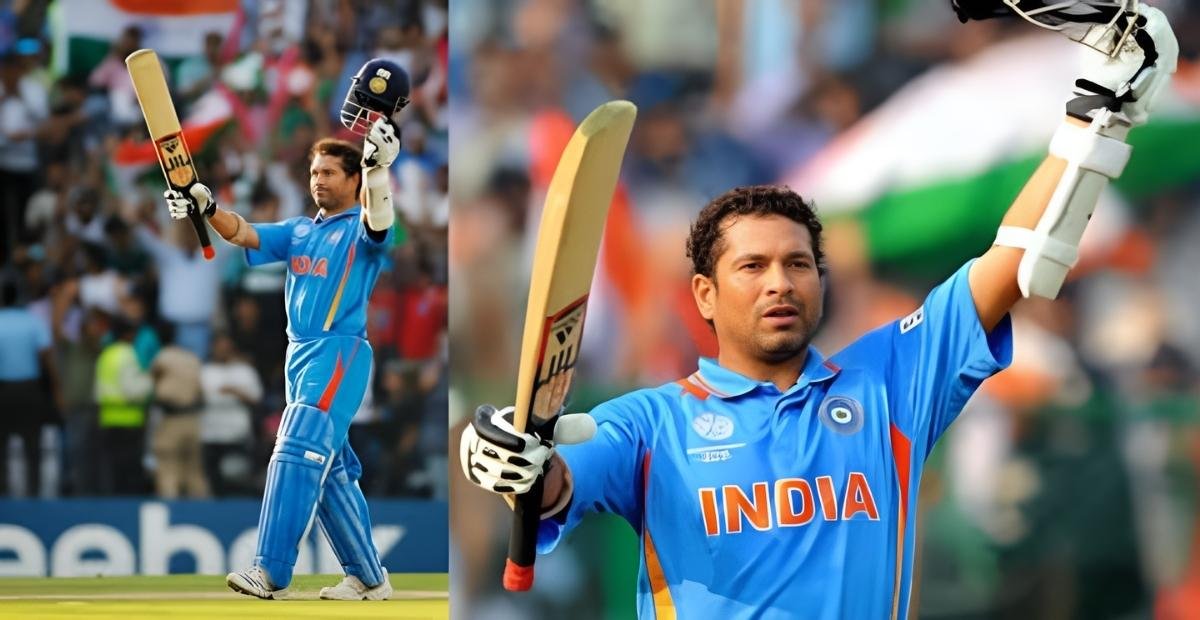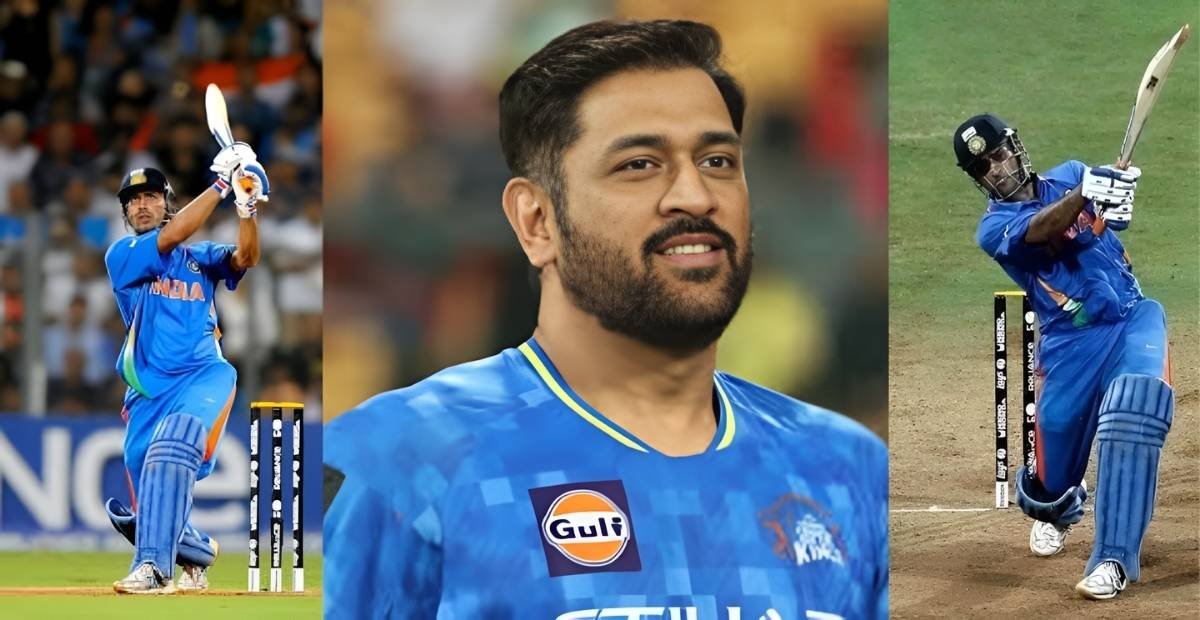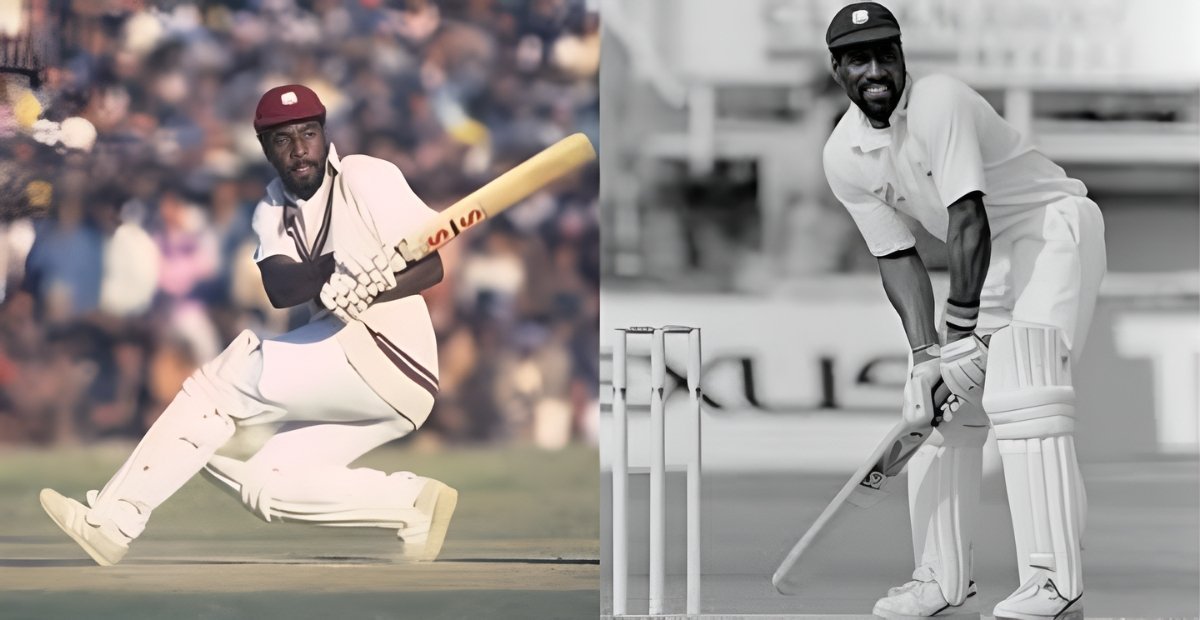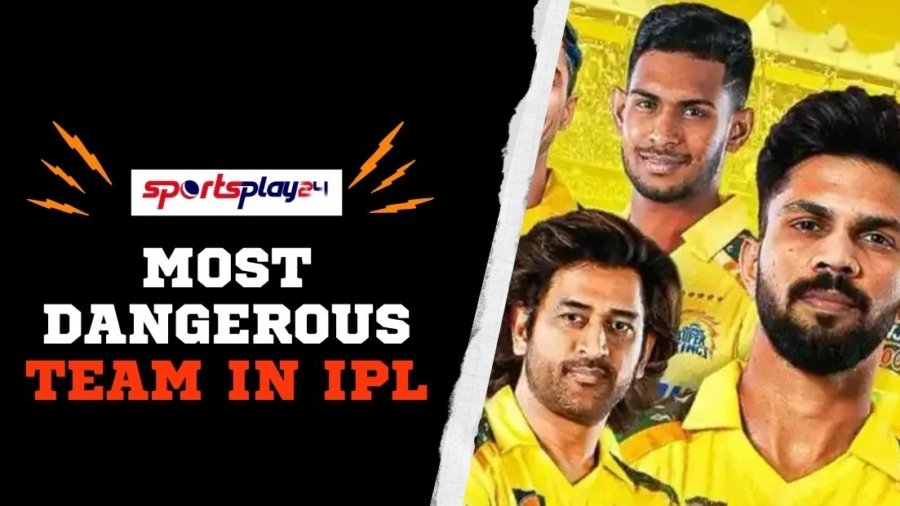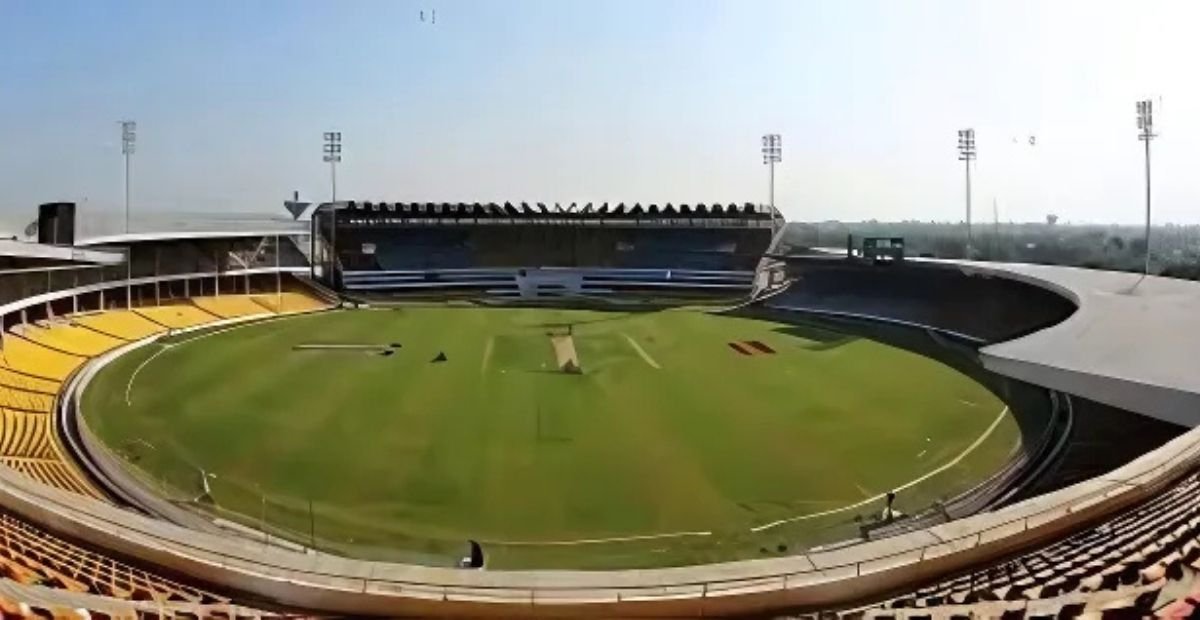In recent years, box cricket has become a favorite pastime in metro cities. With limited open grounds, turf-based arenas offer the perfect setup for quick matches. Corporate offices are forming weekend teams, while community leagues bring together players of all ages. The appeal lies in its simplicity. Anyone wondering what box cricket is can see it’s a compact version of the game, played indoors or on small turfs. Easy accessibility, shorter formats, and fun variations of the box cricket rules make it an exciting game. This blend of speed, social bonding, and competitive spirit is driving its rapid rise across urban India.
What is Box Cricket?
Box cricket is a modern, space-friendly version of cricket played indoors or outdoors in enclosed areas. With fewer players, shorter overs, and nonstop action, it’s fast and thrilling. Influenced by indoor cricket rules, it demands sharp reflexes and aggressive play, making it ideal for urban players seeking quick matches.
How Does Playing Box Cricket Improve Your Game and Fitness?
Box cricket is more than just a shorter version of the traditional game; it’s a modern way to stay fit, connect socially, and sharpen skills. Played in enclosed arenas with modified Box Cricket Rules, it offers a fast-paced and engaging experience for all age groups. Here are some of the key benefits of box cricket:
- Fitness and Endurance: Constant running, quick turns, and high-intensity bursts help improve stamina, cardiovascular health, and agility. It’s a complete workout disguised as a fun game.
- Social Bonding and Team Spirit: Box cricket creates a friendly atmosphere where colleagues, friends, and even strangers bond easily. Playing in small teams promotes communication and teamwork.
- Skill Improvement for Amateurs: For beginners, the shorter pitch and quicker pace make batting, bowling, and fielding easier to practice. It boosts confidence and helps amateurs learn faster.
- Stress Relief and Recreation: The compact format allows players to enjoy a full match in less time, making it perfect for working professionals who need a quick stress buster.
- Inclusive and Accessible Game: Unlike outdoor cricket, box cricket doesn’t require a significant ground. Indoor arenas make it accessible year-round, regardless of weather conditions.
What Are the Basic Rules of Box Cricket?
Box cricket is a fast-paced and exciting format of the game, played in enclosed spaces with modified rules that keep the action engaging and thrilling. While the spirit of cricket remains, the format is designed to be shorter, more dynamic, and suited for limited grounds. Below is a checklist of must-know rules that define how the game is played.
Team Composition and Players
- A typical team size in box cricket is 6 to 8 players, depending on the tournament or facility rules.
- Each side fields the same number of players, ensuring balance between batting and bowling opportunities.
- Substitutions are generally not allowed once the match begins, except in case of injuries.
- Every player is expected to contribute in multiple roles batting, bowling, and fielding since smaller teams demand versatility.
Match Duration and Overs
- Matches are usually short, lasting around 45 minutes to an hour.
- Each innings is restricted to a fixed number of overs, often 6 to 10 per side.
- Over limits ensure a quick turnaround between games, making it possible to organize multiple matches in a single evening or tournament.
- The reduced overs add intensity, as batters are under constant pressure to score quickly and bowlers must remain disciplined.
Batting Restrictions and Running Between Wickets
- Only two players bat at a time, with partnerships continuing until dismissal.
- Runs are scored by hitting boundaries, running between wickets, or through special indoor scoring zones if the venue uses them.
- Many venues mark sidewalls and ceilings for bonus runs or penalties, making placement more critical than sheer power.
- Running between wickets is often limited to short distances, with umpires ensuring that players complete runs within the restricted pitch area.
Bowling Regulations and Variations
- Every player on the fielding side is usually required to bowl at least one over, promoting fairness and team balance.
- Bowlers must deliver underarm or overarm depending on venue rules, though underarm deliveries are more common in enclosed arenas.
- Wides and no-balls are penalized with extra runs and a free hit in many formats, to discourage unfair deliveries.
- Variations like slower balls, targeted line-and-length, and surprise bouncers (if allowed) play a key role in containing aggressive batting.
Scoring System in Box Cricket
Scoring in box cricket is designed to keep the game fast, fun, and unpredictable. Unlike outdoor cricket, the limited space and enclosed walls add exciting twists to every run scored. The scoring rules in box cricket reward innovation, but they also penalize careless shots. Players need to adapt quickly to the compact setting, making every stroke count. The box cricket points system strikes a balance between traditional cricket values and indoor creativity.
Runs from Boundaries, Walls, and Nets
Hitting a ball to the back wall often fetches the maximum runs, similar to a boundary in outdoor cricket. Side walls usually carry fewer points, but clever angles can still add quick runs. For instance, a clean hit reaching the back wall without touching the ground may be worth six runs, while bouncing once before hitting the wall could result in four. Nets used in some arenas also influence scoring. Direct net shots may add extra runs, but could also risk dismissal depending on local rules.
Overhead Shots and Penalties
One unique twist in box cricket is the restriction on overhead shots. A ball hit directly onto the roof often leads to penalties or even dismissal. This rule ensures the game remains grounded and prevents players from relying on blind swings. Some leagues deduct runs for roof hits, while others count it as a dot ball. It keeps batters focused on placement and controlled hitting rather than raw power.
Extras and Powerplays
Just like outdoor cricket, extras such as wides and no-balls award runs to the batting side. However, formats often add memorable power plays where runs are doubled for a set over. These overs create pressure on bowlers and give batters a chance to shift momentum quickly. Teams often save their best hitters for power plays, making these moments decisive in the game.
Box Cricket Scoring System
| Shot Type | Runs Awarded | Condition |
| Back wall (clean hit) | 6 | Without bounce |
| Back wall (with bounce) | 4 | One bounce allowed |
| Side wall | 1–2 | Depends on local rules |
| Roof hit | -2 / Out | As per league rules |
| Extras (wide/no-ball) | 1 | Plus extra delivery |
Dismissal Rules in Box Cricket
Just like outdoor cricket, dismissals play a big role in shaping the match outcome. Yet, the dismissal rules in box cricket add unique challenges due to the indoor setup. Batsmen must stay alert because a single mistake can turn the tide.
Common Dismissals
Players can be dismissed through classic cricket modes, including:
- Bowled – The ball hits the stumps directly.
- Caught – Any fielder, including the wicketkeeper, takes a clean catch.
- Run-Out – A batsman is short of the crease when the ball hits the stumps.
- Hit-Wicket – The batsman accidentally dislodges the stumps with their body or bat.
Unique Indoor Dismissals
Box cricket introduces special scenarios because of the enclosed area. A ball hit onto the roof is often an automatic dismissal. Similarly, if the ball ricochets off a side wall and is caught before touching the ground, it still counts as “caught out.” This variation increases fielding opportunities and keeps batsmen under pressure.
How Players Get Out in Box Cricket?
Beyond these rules, local leagues sometimes add twists such as penalizing reckless play or awarding dismissals for repeated violations like hitting the ball out of the playing box. These variations ensure matches remain balanced and competitive.
Types of Dismissals in Box Cricket:
- Bowled
- Caught (direct or off wall deflection)
- Run-out
- Hit-wicket
- Roof-hit dismissal
- Local rule-based dismissals
This mix of traditional and indoor-specific rules keeps the game lively, ensuring players respect both discipline and creativity.
Equipment and Playing Area
The setup of box cricket is compact, designed to fit into indoor arenas or turf enclosures. Understanding the dimensions of the cricket pitch and the gear used is essential for smooth gameplay.
Pitch and Enclosure
The pitch is typically shorter than a standard cricket pitch, often measuring around 16–20 yards. The playing area is enclosed with nets or walls, ensuring the ball remains in play. These boundaries define the fast-paced scoring system and prevent prolonged fielding chases.
Equipment for Box Cricket
The bat used is lighter, making it easier for quick strokes and controlled hitting. The ball is softer than a leather cricket ball, often a tennis or synthetic variant, to reduce the risk of injury in confined spaces. Teams also carry protective gear, although it is minimal compared to that used in outdoor cricket. Pads and gloves are standard, while helmets are optional depending on the league.
Safety Measures
Because of the indoor nature, safety gear is highly recommended. Close-in fielders often wear gloves, and some leagues mandate helmets for batters. It ensures that the game remains safe even with rapid-paced action.
Infographic Suggestion:
A simple field layout showing:
- Enclosure walls
- Pitch length
- Batting crease
- Side scoring zones
The compact setup makes the game engaging, accessible, and less physically demanding compared to outdoor cricket.
Special Rules and Variations
Box cricket is unique because every league, tournament, or turf adds its own twist to the format. Unlike traditional cricket, which has fixed rules, box cricket thrives on flexibility and variation, making every match feel fresh and unpredictable. Professional indoor leagues often feature shot-based scoring systems, strict time-bound innings, and mandatory bowling from multiple players.
These rules ensure fairness, prevent domination by a single player, and maintain the game’s thrilling pace. Corporate tournaments, meanwhile, add their own flavor by combining competition with team bonding. Shorter innings, inclusive participation, and safety-focused adjustments are common here, for instance, requiring at least one female player in the squad or restricting the involvement of professional-level cricketers to maintain balance.
Local turf cricket pushes creativity even further. Neighborhood grounds frequently experiment with playful variations such as awarding bonus runs for hitting particular walls or giving extra points for specific shots. Some turfs also organize weekend tournaments with quirky, experimental rules designed to keep players engaged and fans entertained. These grassroots innovations make box cricket more accessible and community-driven, while still preserving the essence of the sport. Together, these evolving formats highlight the adaptability of box cricket and explain why it continues to attract such diverse audiences.
Key Differences Between Box Cricket and Outdoor Cricket
Though both share the essence of bat and ball, they are very different in style and structure. Understanding box cricket vs outdoor cricket helps highlight why indoor formats are gaining popularity.
| Aspect | Box Cricket | Outdoor Cricket |
| Boundaries | Walls and nets decide runs | Open field boundaries |
| Overs | Usually 6–10 per side | 20–50 per side (or longer) |
| Team Size | 6–8 players | 11 players |
| Pitch Size | 16–20 yards | 22 yards |
| Scoring | Walls, nets, and roof rules apply | Runs scored traditionally |
| Duration | 45–90 minutes | Several hours to days |
In outdoor cricket, stamina and long-term strategy dominate. Box cricket, on the other hand, emphasizes reflexes, quick thinking, and aggressive batting; the limited overs and compact space shape team strategies. Bowlers rely on variations rather than raw pace, and fielders must react instantly in small enclosures.
Conclusion – Why Box Cricket is Here to Stay
Box cricket has transformed how people enjoy the sport. The box cricket rules are simple yet dynamic, striking a balance between tradition and innovation. Compact pitches, shorter games, and exciting scoring keep both beginners and seasoned players engaged. Its adaptability for leagues, corporate events, or casual matches makes it an inclusive form of cricket. Most importantly, it brings people together in limited spaces where outdoor cricket isn’t possible. With its mix of fun, speed, and accessibility, box cricket isn’t just a trend; it’s a format built to thrive in today’s fast-paced world.




